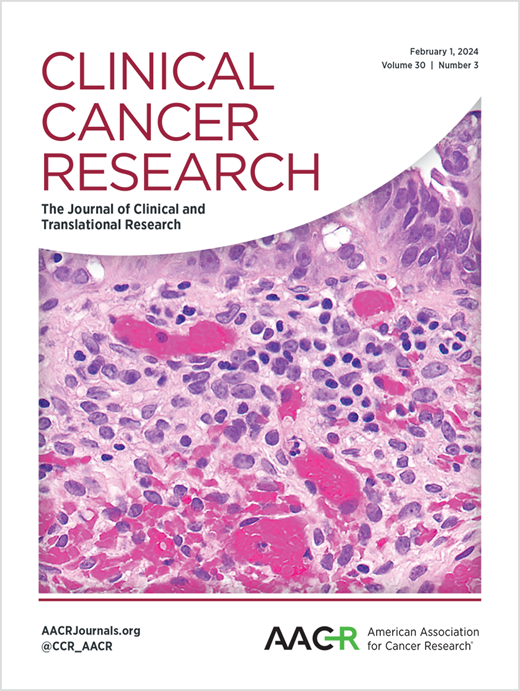癫痫相关同源蛋白6 (SEZ6):神经内分泌癌的生物学和治疗靶点
IF 10.2
1区 医学
Q1 ONCOLOGY
引用次数: 0
摘要
癫痫相关同源蛋白6 (SEZ6)是一种参与神经元发育的细胞表面1型跨膜蛋白,其在成人组织中的表达几乎仅限于中枢神经系统。SEZ6的异常表达与神经发育和精神疾病有关,包括癫痫、精神分裂症和阿尔茨海默病。最近,SEZ6在小细胞肺癌(SCLC)和其他高级别神经内分泌恶性肿瘤中被检测到过表达,尽管我们对SEZ6作为癌症驱动因素的功能的了解有限。SCLC的一个谱系定义转录因子ASCL1被认为是SEZ6表达的调节因子。SEZ6已成为抗体-药物偶联(ADC)治疗的新靶点,早期研究显示出有希望的抗肿瘤活性,表明SEZ6有可能被具有替代作用机制的药物靶向。在此,我们回顾了SEZ6的生物学及其在恶性肿瘤中的意义,总结了SEZ6靶向adc的临床前和临床发现,并讨论了进一步阐明SEZ6在SCLC和其他神经内分泌肿瘤中的作用的未来方向。本文章由计算机程序翻译,如有差异,请以英文原文为准。
Seizure-Related Homolog Protein 6 (SEZ6): Biology and Therapeutic Target in Neuroendocrine Carcinomas
Seizure-related homolog protein 6 (SEZ6) is a cell surface type 1 transmembrane protein involved in neuronal development, expression of which in adult tissues is almost exclusively limited to the central nervous system. Aberrant expression of SEZ6 has been associated with neurodevelopmental and psychiatric disorders including epilepsy, schizophrenia, and Alzheimer’s disease. More recently, SEZ6 overexpression has been detected in small cell lung cancer (SCLC) and other high-grade neuroendocrine malignancies, although our understanding of the function of SEZ6 as a driver of cancer is limited. A lineage-defining transcription factor of SCLC, ASCL1, has been implicated as a regulator of SEZ6 expression. SEZ6 has emerged as a novel target for antibody-drug conjugate (ADC) therapy, and early studies have shown promising antitumor activity, demonstrating the potential for SEZ6 to be targeted by drugs with alternate mechanisms of action. Here, we review the current knowledge of the biology of SEZ6 and its implications in malignancy, summarize the preclinical and clinical findings of SEZ6 targeted ADCs, and discuss future directions to further elucidate the role of SEZ6 in SCLC and other neuroendocrine neoplasms.
求助全文
通过发布文献求助,成功后即可免费获取论文全文。
去求助
来源期刊

Clinical Cancer Research
医学-肿瘤学
CiteScore
20.10
自引率
1.70%
发文量
1207
审稿时长
2.1 months
期刊介绍:
Clinical Cancer Research is a journal focusing on groundbreaking research in cancer, specifically in the areas where the laboratory and the clinic intersect. Our primary interest lies in clinical trials that investigate novel treatments, accompanied by research on pharmacology, molecular alterations, and biomarkers that can predict response or resistance to these treatments. Furthermore, we prioritize laboratory and animal studies that explore new drugs and targeted agents with the potential to advance to clinical trials. We also encourage research on targetable mechanisms of cancer development, progression, and metastasis.
 求助内容:
求助内容: 应助结果提醒方式:
应助结果提醒方式:


